- Categories:
- Regions:
In the southern Great Barrier Reef you can snorkel among delicate corals and colourful fish, share your island ‘solitude’ with thousands of seabirds, and enjoy sightseeing on a scale second to none!
Even better, it’s not ‘Mission Impossible’ to get there. The southern part of the Great Barrier Reef begins at Bundaberg (only 4 hours' drive from Brisbane); and stretches up through the Capricornia Cays off Gladstone to the Keppel Bay Islands off Yeppoon.
We’ve pulled together 3 sensational reasons to explore the southern Great Barrier Reef, above and below water!
Snorkelling
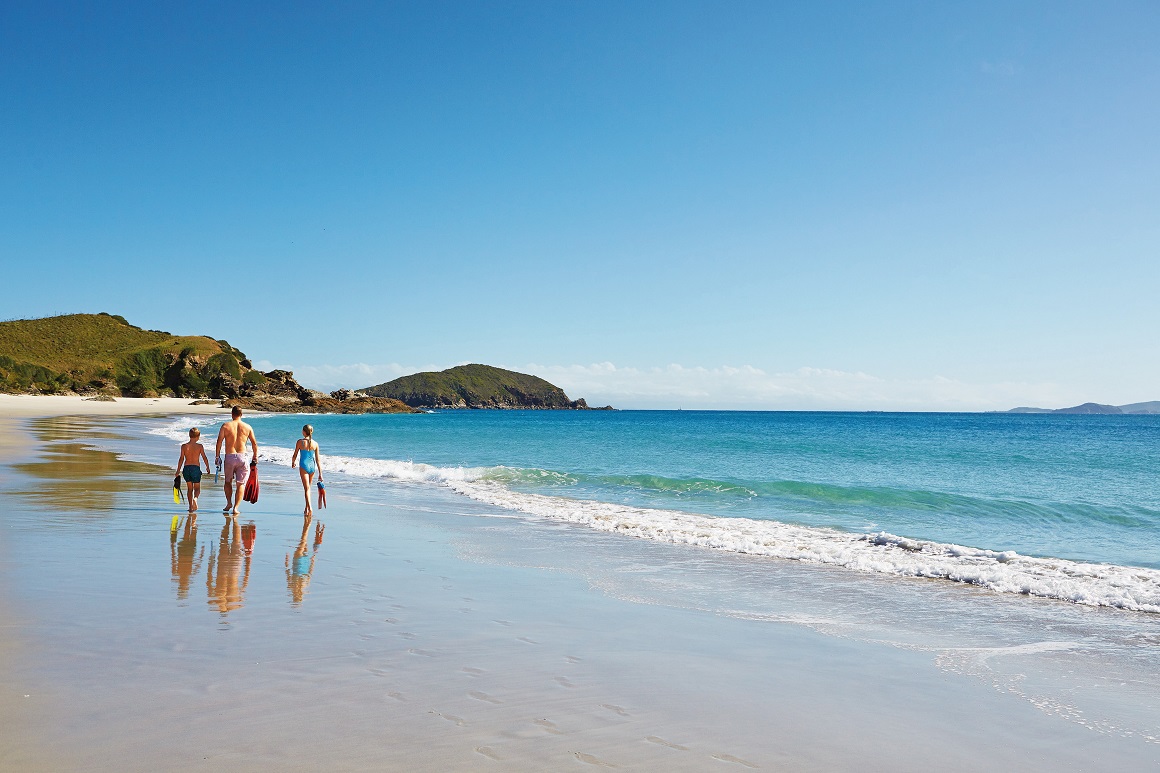 Keppel Bay Islands National Park | © Tourism and Events Queensland
Keppel Bay Islands National Park | © Tourism and Events QueenslandIf stepping off a secluded beach to snorkel in crystal-clear waters among colourful fringing reefs sounds enticing, Keppel Bay Islands National Park is for you. With your tent set among the native hibiscus behind the beach, you can snorkel to your heart’s content.
Check out the fringing reefs at Mazie Bay on North Keppel, or head over to the fringing reefs surrounding Humpy and Miall islands and Olive Point headland on Middle Island. While corals here are less diverse than reefs further from the mainland, you’ll discover a fascinating variety of fish and other marine life.
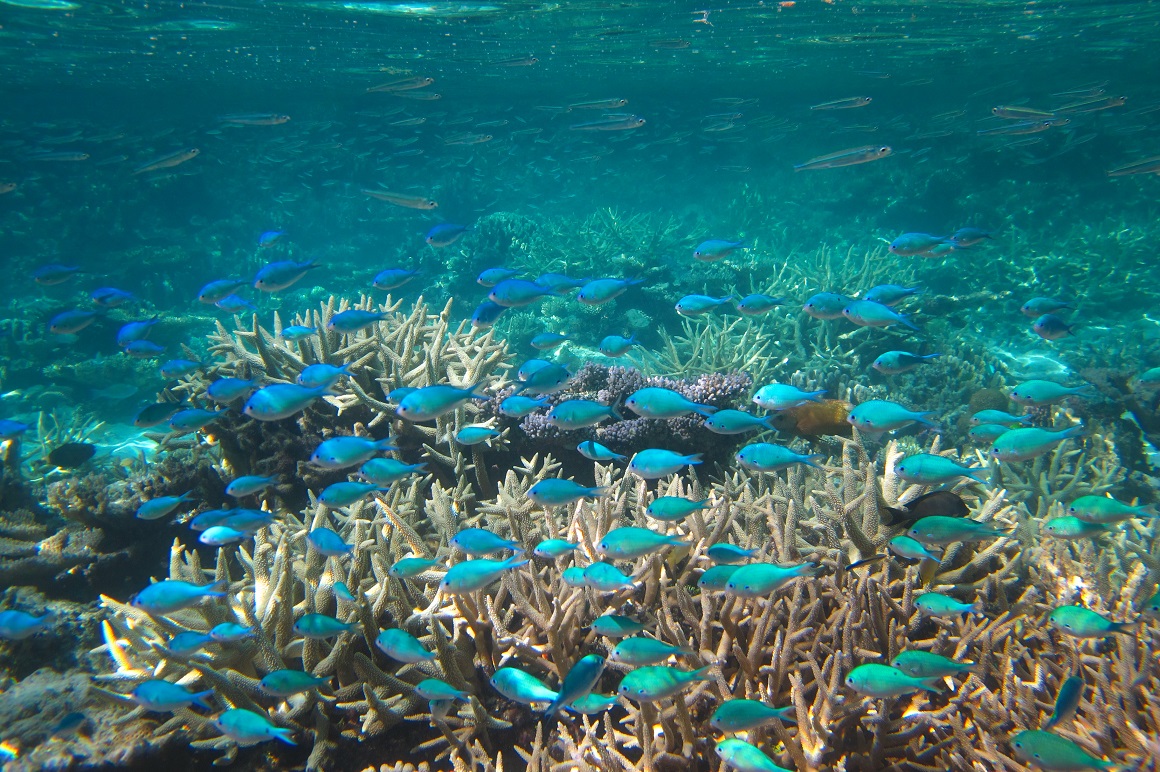 North West Island, Capricornia Cays National Park | © Queensland Government
North West Island, Capricornia Cays National Park | © Queensland GovernmentOf course, snorkelling in the Capricornia Cays National Park should also be on your list! Wade into the shallow turquoise waters that surround your coral cay and explore lagoons dotted with patch reefs and bommies rising vertically from the sandy floor. Here, corals attract darting fish and colourful marine life like bees to a honey pot!
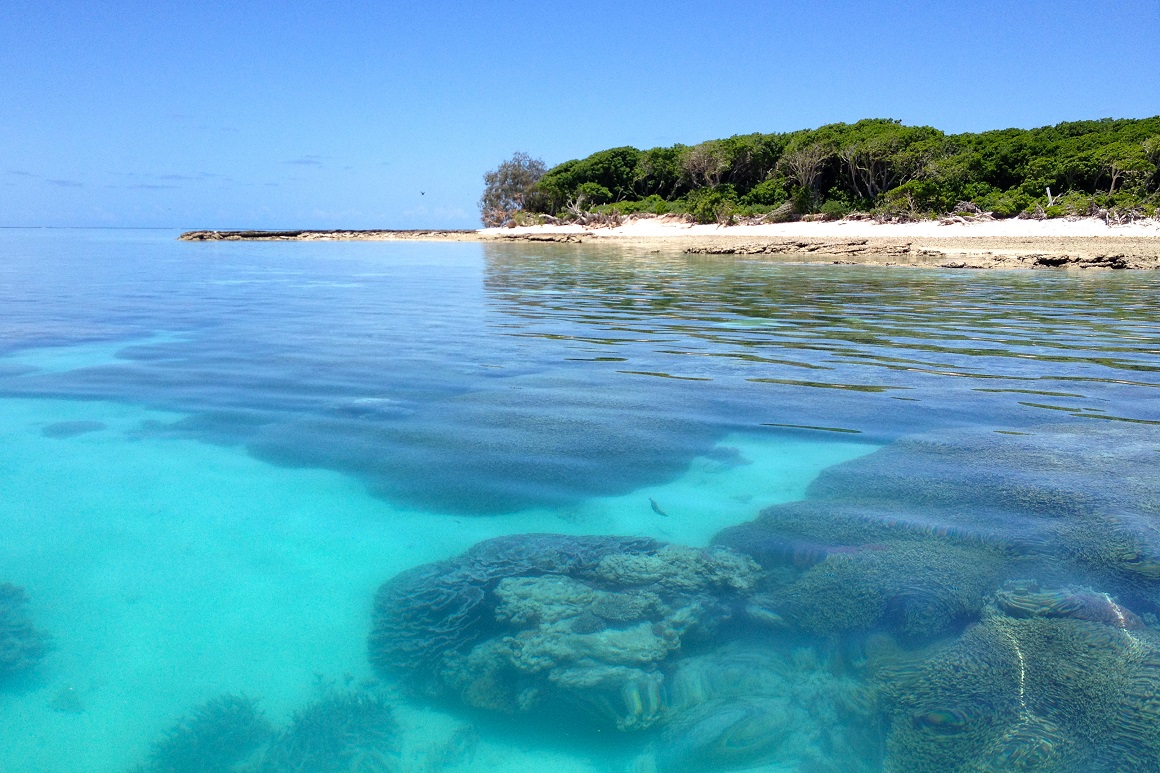 Lady Musgrave Island, Capricornia Cays National Park | © Lise Pedersen
Lady Musgrave Island, Capricornia Cays National Park | © Lise PedersenWithin the ‘Cap Cays’, Lady Musgrave Island is a popular destination, and the lagoon here is ideal for beginners—you’ll find more delicate and luxuriant corals in this well-protected area. Experienced snorkellers will enjoy a swim towards the reef edge to gaze at myriad fish and even more varied corals.
Seabirds
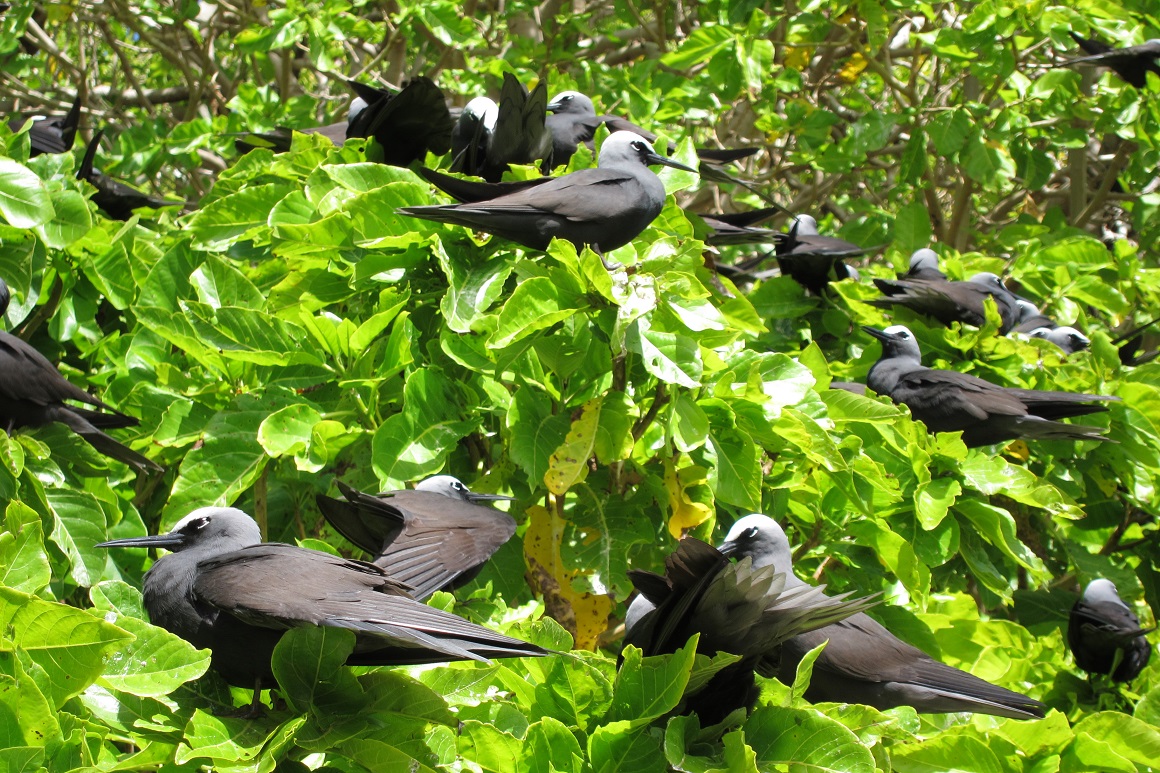 Black noddies in pisonia forest, Capricornia Cays National Park | © Queensland Government
Black noddies in pisonia forest, Capricornia Cays National Park | © Queensland GovernmentCamp on one of nature’s wonders—the coral cays that comprise Capricornia Cays National Park—and be prepared to share your island idyll with thousands of migratory seabirds during the summer months! Wedge-tailed shearwaters will entertain you with their clumsy landings each evening as they return to their burrows after a day’s fishing.
Then, during the night, they’ll serenade you with their mournful calls—parent birds calling to each other and to their chicks. Black noddies nesting in the islands’ pisonia forests will rustle and bustle noisily among the foliage as you explore walking tracks.
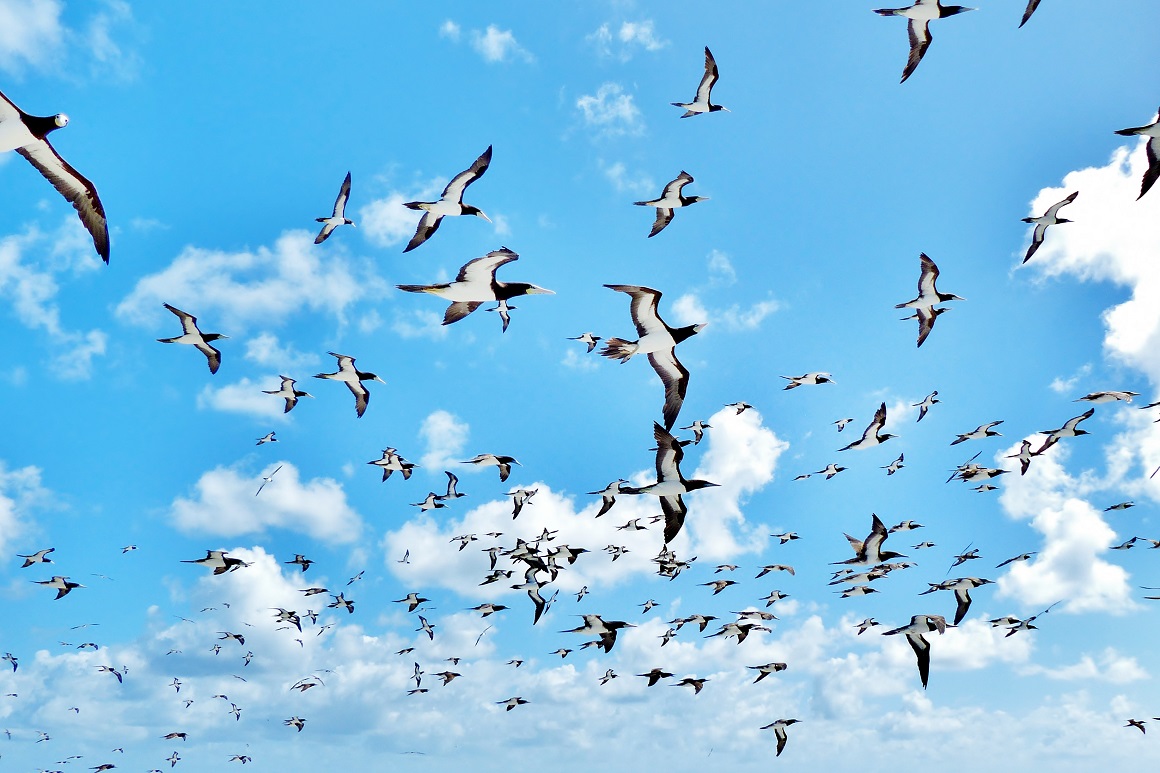 Brown boobies in flight, Capricornia Cays National Park | © Queensland Government
Brown boobies in flight, Capricornia Cays National Park | © Queensland GovernmentYou’ll see several species of terns nesting on the beaches—nests are well-camouflaged so take care where you walk—and brown boobies, egrets, oyster-catchers and various waders feeding and roosting along the shores.
But that’s not all—there’s plenty more wildlife to encounter! In spring and summer, green and loggerhead turtles will be busy mating on the shallow reef flats, with females nesting on the beaches from October to February. And, in winter months, humpback whales pass by during their annual migration to the Great Barrier Reef. These islands are simply a birdwatchers’ (and wildlife watchers’) paradise!
Sightseeing
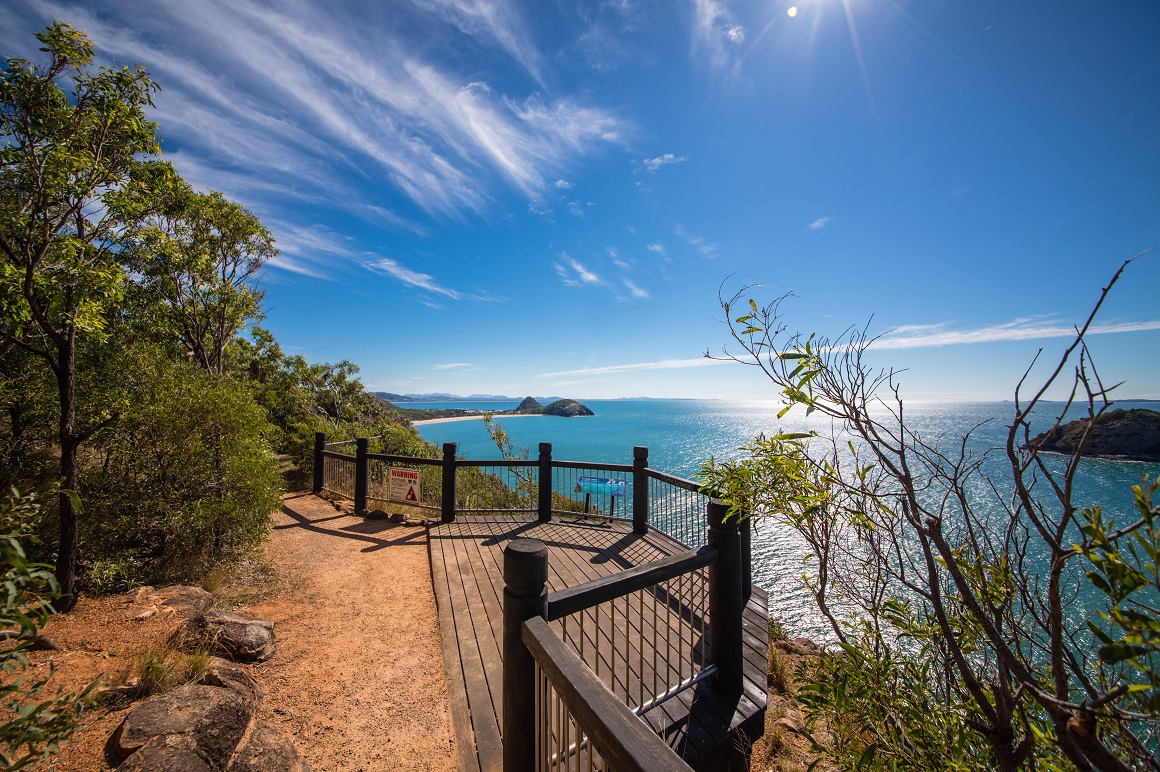 Bluff Point track, Capricorn Coast National Park | © Tourism and Events Queensland
Bluff Point track, Capricorn Coast National Park | © Tourism and Events QueenslandIn the Capricorn Coast National Park take your time to explore scenic coastal drives and walks—this is the best place to see the towering rocky outcrops left from the ancient volcanic activity that shaped the region. At Double Head, take in views over the harbor and Fan Rock, a striking volcanic rock formation. Take a walk through sunny grasslands and coastal vine scrub up to lookouts including Bluff Point, for panoramic views of the coastline and islands.
In the Keppel Bay Islands, where 18 picturesque islands stud the blue waters of Keppel Bay, discover dramatic landscapes of steep hills and cliffs plunging towards the sea and enjoy sweeping ocean and island views from lookouts on walking tracks on North Keppel and Humpy islands. Sightseeing on the islands will simply take your breath away!
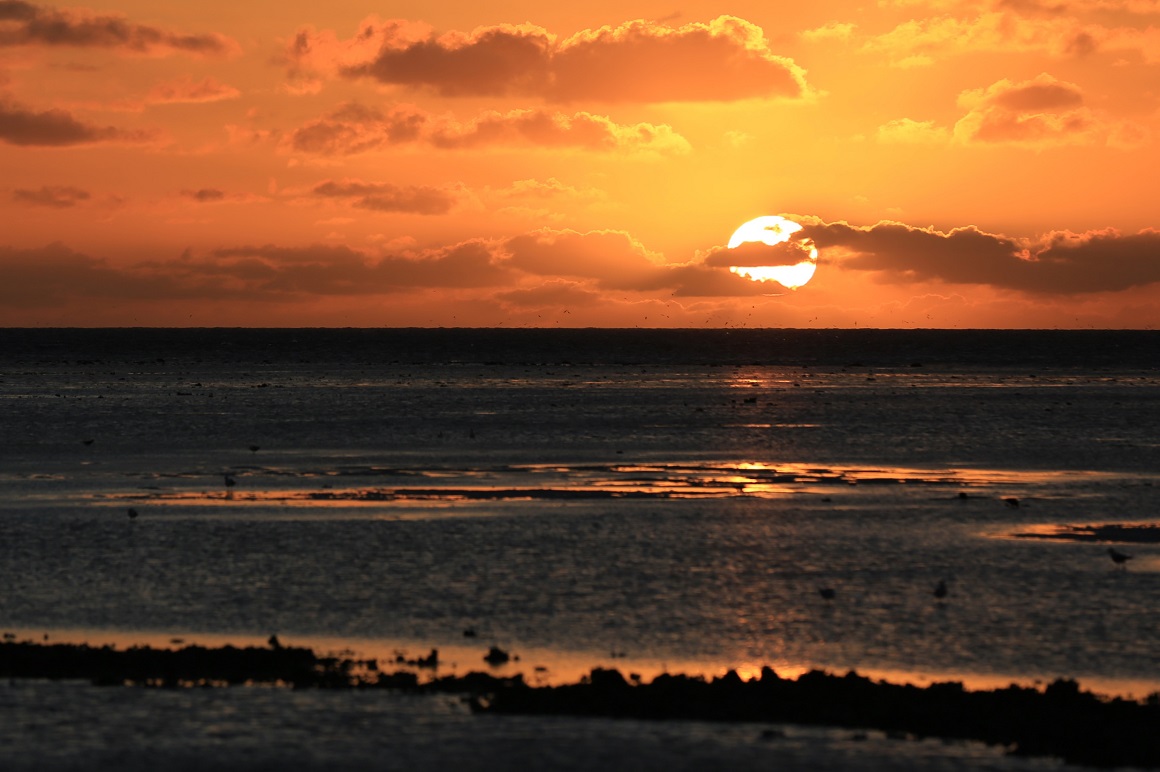 Sunset at North West Island, Capricornia Cays National Park | © Queensland Government
Sunset at North West Island, Capricornia Cays National Park | © Queensland GovernmentIn the Capricornia Cays, where coral-built islands are crowned with green forest and fringed by brilliant white coral sands, you can watch mesmerised as the sun sends ripples of gold over a milky blue sea at sunrise. And then you can watch the spectacle all over again at sunset … seriously Insta-worthy!
Put yourself in the picture!
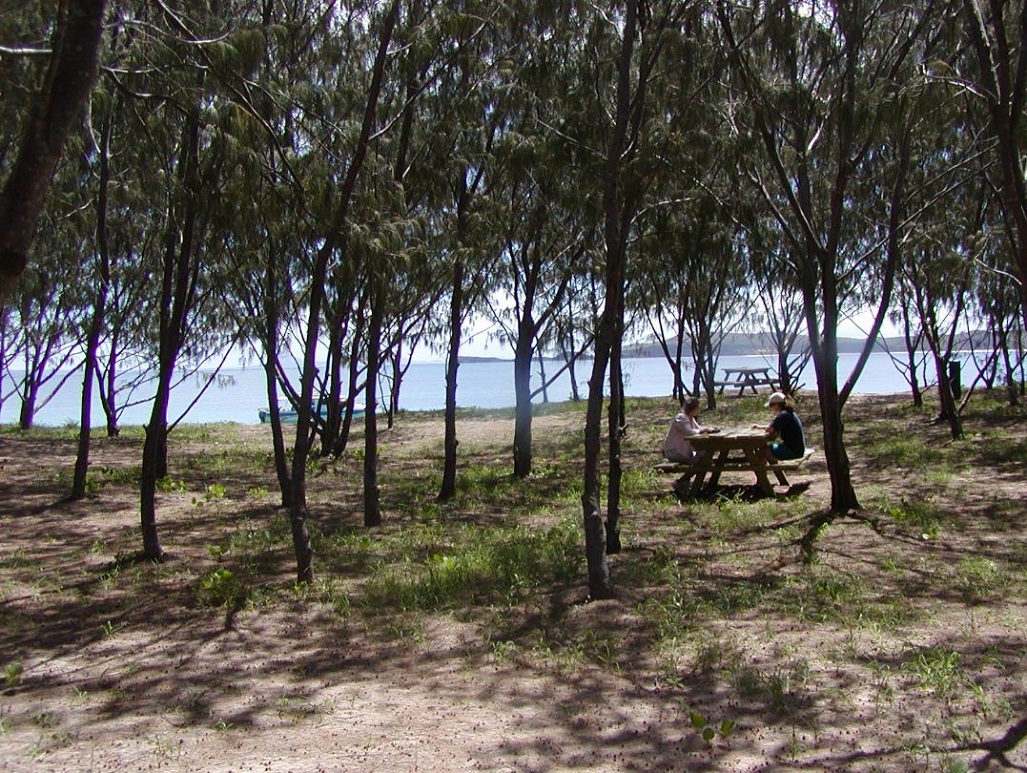 Keppel Bay Islands National Park | © Queensland Government
Keppel Bay Islands National Park | © Queensland GovernmentStart planning now for a short, or a long, stay at the southern end of the world-renowned Great Barrier Reef.
Check these out:
- Capricornia Cays National Park (accessible by private boat or charter from Gladstone, Bundaberg and Seventeen Seventy)
- Capricorn Coast National Park (along the coast from Yeppoon to Emu Park)
- Keppel Bay Islands National Park (accessible by private boat or charter from Rosslyn Bay Harbour).


